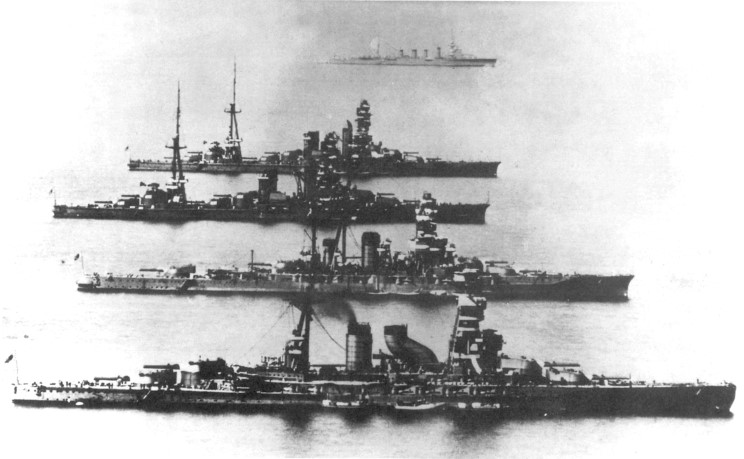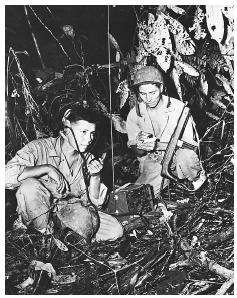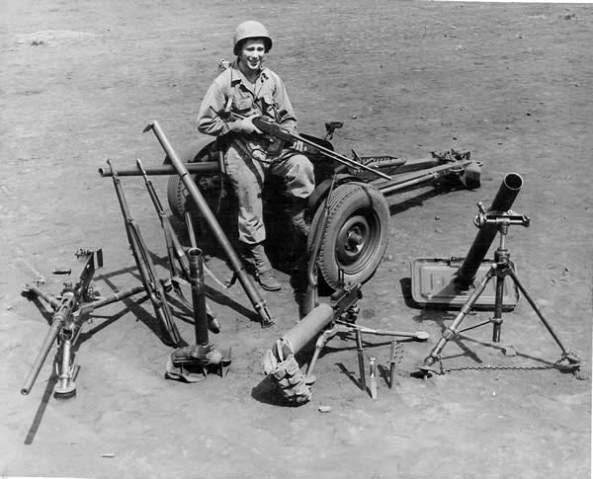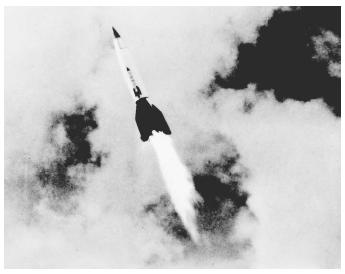 this is the schematic for the me262 the first oprashnle jet firghter
this is the schematic for the me262 the first oprashnle jet firghter
this flat top ship is the kaga navle ship
and
these are some jap navel ships

this is a pitcher of some f6fs planes to help the ground troops on iwo jima

On June 6, 1944, D day, the day of invasion for Overlord had come. The U.S. First Army, under Gen. Omar N. Bradley, and the British Second Army, under Gen. Miles C. Dempsey, established beachheads in Normandy on the French channel coast. The German resistance was strong, and the footholds for Allied armies were not nearly as good as they had expected. Nevertheless, the powerful counterattack with which Hitler had proposed to throw the Allies off the beaches did not materialize, neither on D day nor later. Enormous Allied air superiority over northern France made it difficult for Rommel, who was in command on the scene, to move his limited reserves. Moreover, Hitler became convinced that the Normandy landings were a feint and the main assault would come north of the Seine River. Consequently, he refused to release the divisions he had there and insisted on drawing in reinforcements from more distant areas. By the end of June, 850,000 men and 150,000 vehicles were ashore in Normandy.
http://www.history.com/content/worldwartwo/the-allies-triumph
 and beauty. Like the first one, the poster suggests that women should get war jobs for the men that they write to weekly
and beauty. Like the first one, the poster suggests that women should get war jobs for the men that they write to weekly  and pray for daily.
and pray for daily. f the women who were already working. it encouraged women all over the country to help. "We Can Do It"!
f the women who were already working. it encouraged women all over the country to help. "We Can Do It"! typewriter. This image was produced by the Royal Typewriter Company
typewriter. This image was produced by the Royal Typewriter Company




 (A primary source of a picture of Philip Johnston with a Navajo Code Talker during the 1940's)
(A primary source of a picture of Philip Johnston with a Navajo Code Talker during the 1940's)




 38st Gang
38st Gang



The family lived in Wieluń – Bolków village,
The father of the family was named Daniel. His father name was Abraham. Daniel died on January 1939 in Bolków
The mother of the family, Daniel's wife, Brana, was from the nearby
1. The firstborn was Ruben - Jakob, who was born around 1900. He was deported from Bolków to the Łódź ghetto. In 1944 he was deported to
2. The second son was named Berek. He escaped to
3. The first daughter and third sibling of the family was named Ruth, born in 1911. She lived in Piotrków Trybunalski. She worked for the Germans in a factory during the war. In 1944 the Germans broke into her house, a German officer shot her, and left her husband Allo Berkowicz, and her 9 year old son, named Zygmuś ("Zalman" in Yiddish), in the house, later to be deported to Auschwitz - Birkenau. By some twist of fate, Meyer (who is Ruth's brother), worked in a documentation job "schreiber", that documented all of the incoming people into the camp, and when they were transported to the camp, Meyer found them in the list, and for the next 8 days, Meyer came in hiding to feed this beautiful and talented boy with an extra piece of bread or some soup. On Yom Kippur, 5705 (September 26, 1944), Meyer came to feed the boy, but the boy declined, because he said to him that tomorrow the Germans will cremate all of the boys, himself included and he doesn't need the bread anymore... That night, on the eve of Yom Kippur, 2000 children were murdered, including Zygmuś. The following day, Meyer went to feed the boy, only to be faced with an empty block.
4. The second daughter and fourth sibling of the family was named Dwora - Dorka (Dora). She was married to Goldbart and had 2 children. She was deported with them along with her mother, Brana, to the Lututów ghetto, and along with her mother, they were all deported to their death to Chelmno.
5. The third daughter and fifth sibling, Esther, got married at the start of the war. She fled with her husband Dawid Berkowicz, her husband's father and her husband's brother to
6. The third son and sixth sibling of the family, Meyer, was suspected of sabotaging the family mill, and was sent to a German prison in Papenburg, at the German - Dutch border. There were no Jews in this prison, but because Meyer didn't look like a Jew, he was able to survive. In the winter 1941 - 2, he was released from jail, and was sent to pave roads for the German army in Wielun, under extreme conditions of cold weather. In 1942 he was deported to the
7. The fourth daughter and seventh sibling of the family, was named Adela, born in1921. In 1942 she received forged Aryan documents that claimed that she was Polish, and not Jewish, as was her husband, Jakob Jablonski. They escaped to
8. The fourth son and eighth sibling of the family, Abram "Abramek", born in 1924. During the war he was transported to the Łódź ghetto in 1942 till 1944, after which he was transported to
9. The fifth son and ninth sibling of the family, Zalman, was deported from Wieluń in 1942 to the Łódź ghetto, along with Meyer, Ruben and Abramek (Esther Ankielewicz was there as well). He remained there until 1943. One day, he was unexpectedly taken by the German army, at the young age of 14, and was never to be heard from again. There are some who claim that he was taken to
================================================
-Could the US have done more to prevent the Holocaust from happening?
-How was the holocaust hidden from the allied powers until the end of the war?
-What were the living conditions like?

BERLIN - The Allied firebombing of the eastern German city of Dresden in 1945 killed no more than 25,000 people — far fewer than scholars' previous estimates running as high as 135,000 — a special commission has found.
The team of a dozen experts, including university professors, archivists and military historians, said Wednesday that four years of research so far has confirmed 18,000 deaths and showed that police and city administrators at the time believed there were about 25,000 victims of the bombing.
Since the end of World War II, scholars have varied in their tally of people killed by waves of British and U.S. bombers on Feb. 13-14, 1945. Some estimates have run to 135,000 or more. In his 2005 book on the bombing, British historian Frederick Taylor argued the real toll was between 25,000 and 40,000.(msnbc)

 This is a WW2 soldier with an assortment of weapons they used during the war. He is with american weapons and he is an american soldier. He is in Springfield Armory NHS Archives, US NPS. This is another primary source because it was taken in the time period in which the war was going on.
This is a WW2 soldier with an assortment of weapons they used during the war. He is with american weapons and he is an american soldier. He is in Springfield Armory NHS Archives, US NPS. This is another primary source because it was taken in the time period in which the war was going on.
 This is a picture of a German V2 rocket that was used during the war but it was captured on Sept. 6, 1947. It was fired from the USS midway. It is a primary source because this rocket was used during the war. We can learn that the Germans had successful rockets and we can guess that it was used against GB or the U.S.
This is a picture of a German V2 rocket that was used during the war but it was captured on Sept. 6, 1947. It was fired from the USS midway. It is a primary source because this rocket was used during the war. We can learn that the Germans had successful rockets and we can guess that it was used against GB or the U.S.


Troops leaving on a boat to go to Africa on November 8, 1942.
Operation torch was the British-American invasion of Friench North Africa during World War Two.

 The Allies siezed all the key points and airports.
The Allies siezed all the key points and airports.

(#2 American soldiers examine a few of the dead)
It began when the German military set out on their "Ardennes Offensive", a offensive strategy that was composed in complete secrecy and executed with full force, surrounding American and British troops. According to John Kline, a WWII veteran, "...nowhere did the American troops give ground without a fight." (http://drizzle.mm.com/user/jpk/battle.htm)

(#3 A map showing the progress of the German Military before the American's formed a successful counterattack strategy)
It is known as the Battle of the Bulge because the initial German attack was able to press into the American and British forces, having an offensive "bulge" into US ground until they were held back as America got its footing. (See http://memory.loc.gov/ammem/collections/maps/wwii/essay1.html for a visual interactive map of how the Battle of the Bulge occurred)

(#4 American soldiers hunkering down in the Ardennes Forest for a defensive against German Troops during the Battle of the Bulge, 1944-1945)
The Germans goal was to break American lines and get through to the Meuse River. Their hopes to end the United States charge into Germany were short-lived though as American troops held off German tanks and military long enough for armored divisions to come to their aid. (http://www.ushmm.org/wlc/article.php?lang=en&ModuleId=10006178)
The conclusion of the Battle of the Bulge was quick in coming. American and British troops quickly organized counterattacks on the German forces and pushed them back until they were actually behind their initial starting point. In the end, the Allied Powers managed to press in on the Germans from three sides, and open the path to Bastogne. Due to German losses, which were a staggering 100,000 men, they were forced to fall back and never accomplished their goal of regaining land in Western Europe.
Answer 1: From December 16, 1944 to January 25, 1945
Answer 2: The "Ardennes Offensive"
Answer 3: 80,000+ soldiers
Answer 4: Because of the German's progress in their assault, as a bulge into the American lines
Answer 5: To reach the Meuse River
Source Citation and Evaluations:
1. http://drizzle.mm.com/user/jpk/wardiary.htm
This is a Primary Source, a war diary, written by Sergeant John P Kline. The link leads to a compilation of his diary entries, letters, documents, and pictures from WWII. Sergeant Kline is a war veteran who fought in the Battle of the Bulge and was later taken prisoner by Germany. Because of it's origins and depth and detail, I do believe that this is an accurate source.
2. http://drizzle.mm.com/user/jpk/battle.htm
This is a Secondary Source. Though it was written by Sergeant Kline (The War Diary Guy), it is merely a list of statistics about the Battle of the Bulge and a short summary written by him. I think it is accurate and a good source for research, but it is not a Primary Source.
3. http://en.wikipedia.org/wiki/Battle_of_the_Bulge
This is a Secondary Source with a Primary Source in it (Picture #4). Because it is Wikipedia, it can have both accurate information and information that is not as believable. The author(s) got all their research from other sources, but anyone can change it. But, based on the length of the article, and how it goes over every single aspect of the Battle of the Bulge, and the citations for the source of the information, I believe that Wikipedia in this case is quite reliable.
4. http://www.ushmm.org/wlc/article.php?lang=en&ModuleId=10006178
This is a Secondary Source, from the United States Holocaust Memorial Museum. It is an online informative article about the Battle of the Bulge. It is basically a very simple overview, just covering the basics. But because it comes from a National Museum, I think it is reliable information.
5. http://www.worldwar2history.info/Bulge/
This is a Secondary Source and it might or might not be very reliable. It is put together by supposed historians, and the site has been under development since 2001. It it just an overview of the Ardennes Offensive, but is from a less reliable source.
6. http://www.strictly-gi.com/page132.html
This site is composed of many Primary Sources, including Picture #5. There are pictures taken during the Battle of the Bulge and testimonies and diary expcerpts from war veterans of the Battle of the Bulge. Based on the website, which was actually put together for military collectors, information seekers, and even battle re-enactors, I think it may be a less reliable source as sources go.
7. http://history.howstuffworks.com/world-war-ii/the-battle-of-the-bulge-timeline.htm
This is both a Primary Source and (mostly) a Secondary Source because, while the information that it is sharing it from a secondary source, it has pictures (Picture #1) and pictures taken during the actual Battle of the Bulge and during WWII in general. The source is a site by Discovery that focuses on all aspects of information, so WWII is just a small part of it. It is probably reliable.
8. http://memory.loc.gov/ammem/collections/maps/wwii/essay1.html
This is a reliable Primary & Secondary Source. Coming from the Library of Congress website, it is an interactive day-by-day of how the Battle of the Bulge commenced. The maps are real (as far as I could find) maps, and the dialogue that explains the maps is the secondary part of it. It's very helpful in seeing how the bulge happens.
9. http://www.olive-drab.com/od_history_ww2_ops_battles_1944bulge.php
A very very good, Secondary Source. The site is a site focusing on the Army, including it's history. It goes over the Battle of the Bulge very well. This site has a picture taken at the time of the battle, but overall the source is just another informational tidbit. It is reliable.
10. http://www.pbs.org/wgbh/amex/bulge/index.html
The items that we used and found helpful off this site, mainly pictures, were all Primary Sources of people, places, and events during the Battle of the Bulge. The pictures were very good, detailed, and there were plenty of them. The site also has a timeline. It is a good site for information and Primary Source Pictures.
11. http://www.history.army.mil/books/wwii/7-8/7-8_Cont.htm#toc
This site is a Secondary Source. It is a book written by Hugh M Cole who has been in the US Military and studied military history since the 1930's. The source is reliable since he was alive during WWII and is also a military historian from the University of Minnesota. The book was written in 1964.